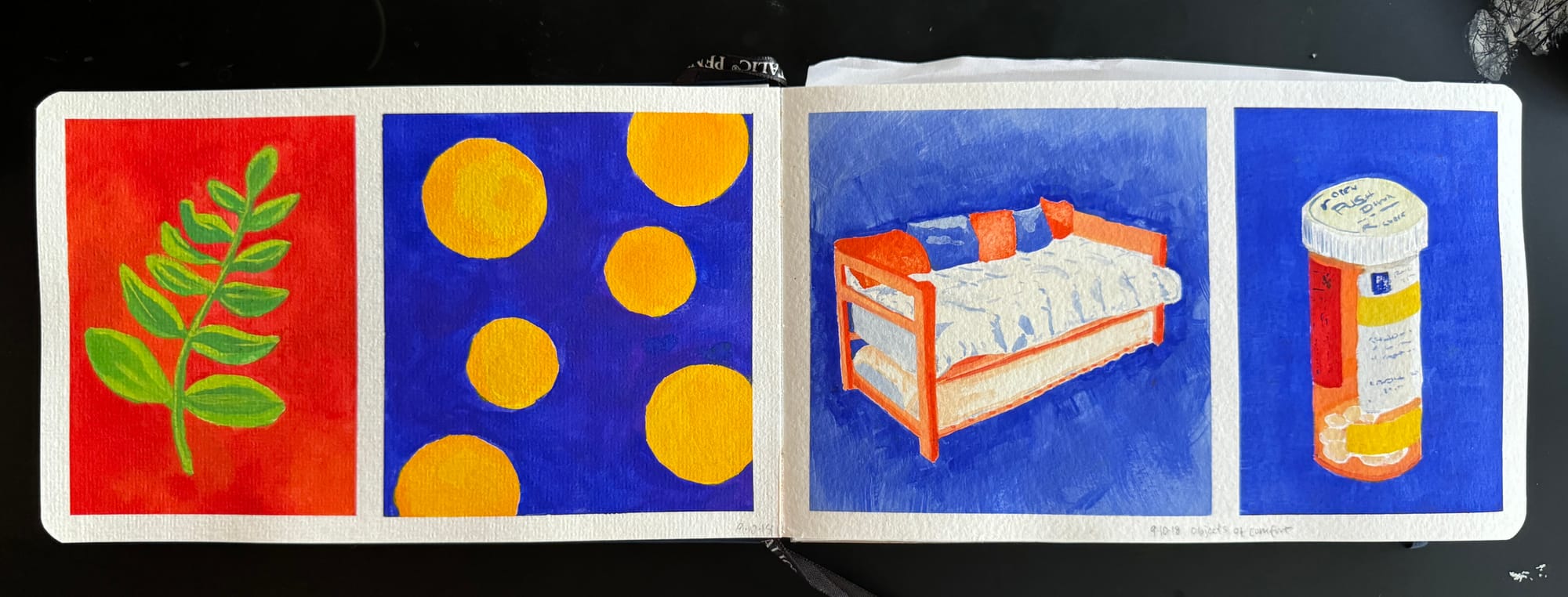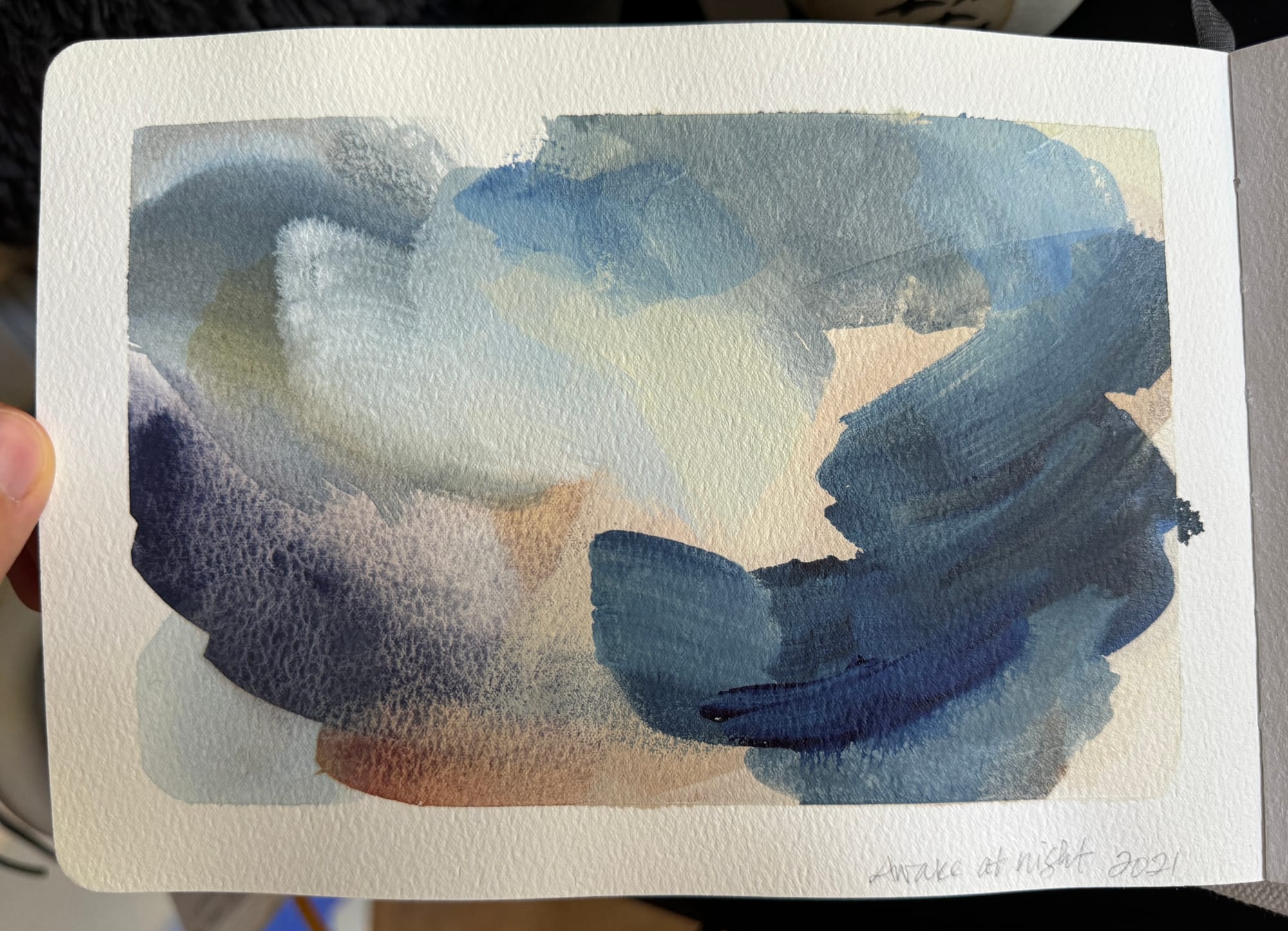Using Color, Pt 2: Blending vs Mixing

Let's talk about the difference between blending and mixing color. Here's how I'm using these terms:
Blending: to create a gradient or area of mixed paint on your paper/canvas by mixing wet paint into wet paint. The goal of blending is to soften all transitions between paint colors and avoid edges and distinct shapes within the paint. Here's an example:

Mixing: combining two or more colors of wet paint on the palette before applying it. If it's applied without blending on the page, each color will make its own shape and have edges. Here's an example:

Blending
Blending is often a feature of photorealistic artwork, and is a particularly common technique with oil paints, which stay wet so long that an artist can blend and work with the paint for hours. When done well, it can create remarkable softness and impressions so realistic that they seem almost like optical illusions. When I started painting, I wanted to become good at blending, and so I practiced it in a lot of my sketches.

Blending is also common with watercolor, though the techniques typically involve painting wet into wet, or setting areas of wet paint next to each other so that the blending happens spontaneously. Artists also can, and do, blend the paint on the page with a brush, but very quickly it can look overworked, as the paint begins to gain texture, or the paper starts to break down. Here's an example of that light watercolor blending: the colors laid down definitely merge and create some natural gradients, but they aren't blended thoroughly.

Here's another example: these are some sketches of a darkening midday sky overcome with wildfire smoke. I'm using gouache here and creating gradients on the page by blending wet paint colors to soften the edges between them.

And lastly, below I've blended together watercolor and acrylic, painting it all wet into wet. I did not blend out all edges between shapes, and allowed some shapes and distinct brush marks to remain, but there is clear blending within those shapes – the different blues and grays in the dark shape on the bottom right, as well as in the pale yellow and grays that blend together on the left upper center area.

Mixing, without blending:
Alternatively, we can mix the colors that we want on a palette and then apply them to the page in discrete brush marks and shapes, allowing them to have visible edges. This kind of painting is often underrated, but it is now my preferred way to work. Here are some examples:

